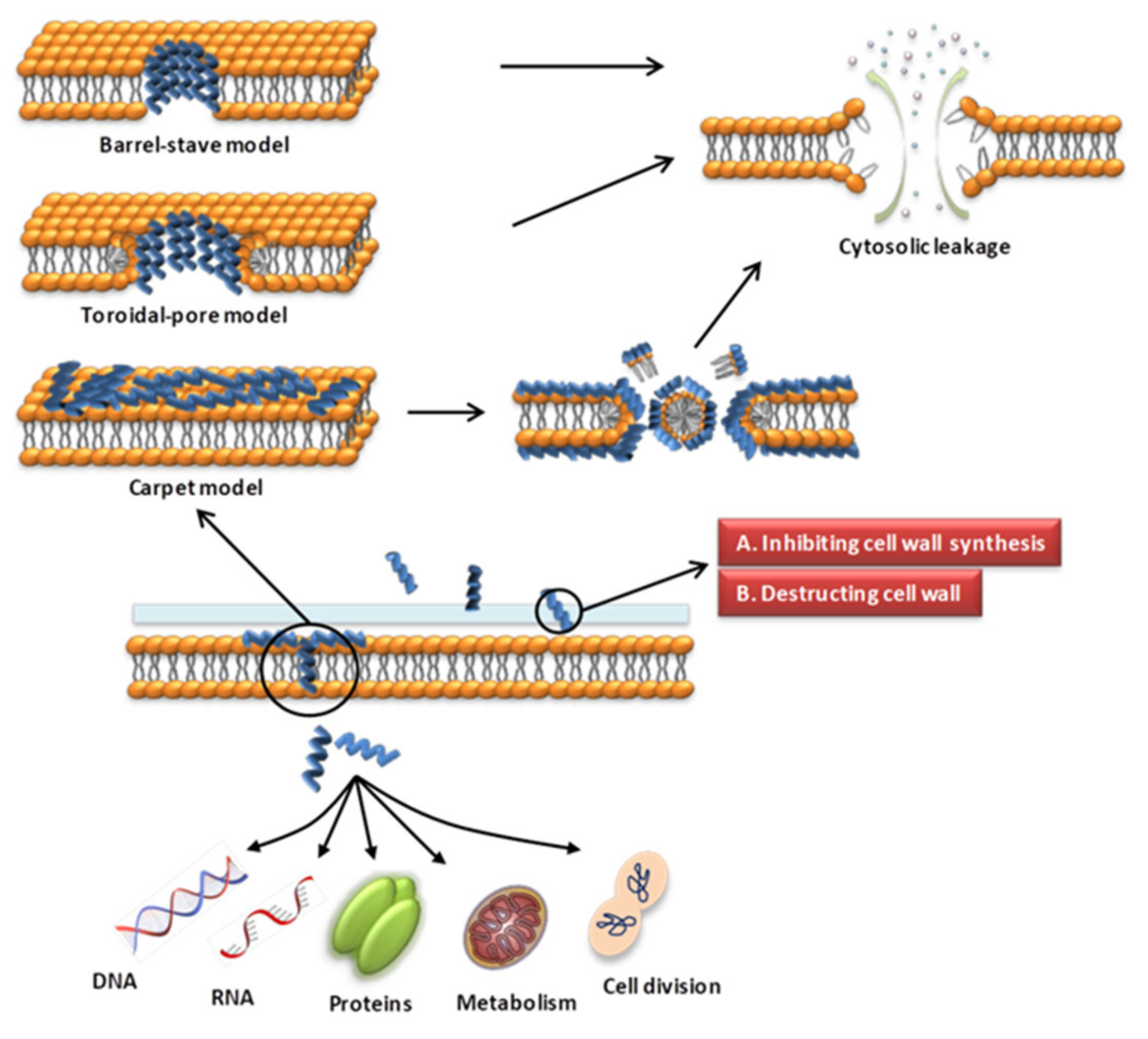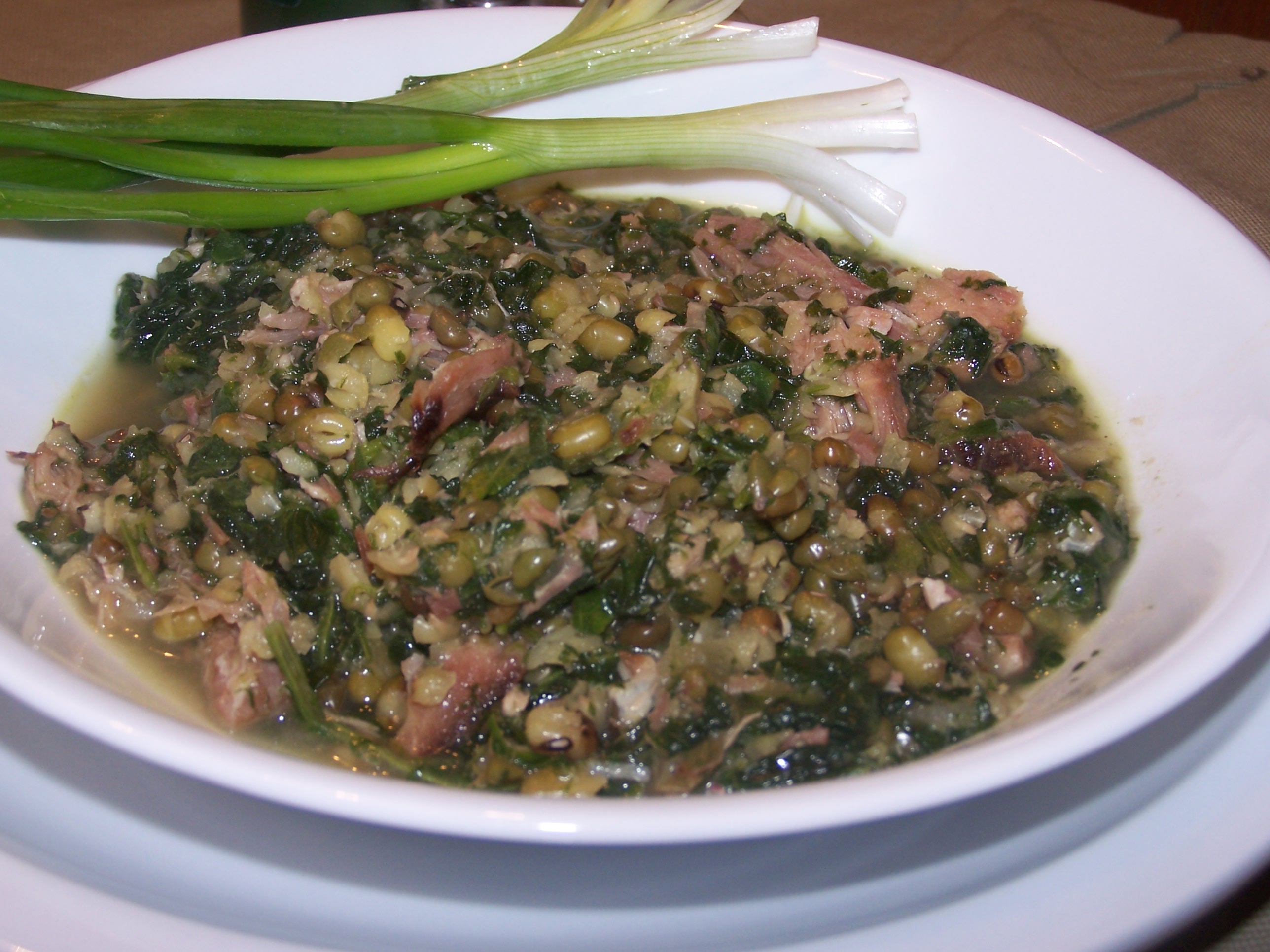Green Gold: Unveiling the Global Journey and Nutritional Power of Mung Beans
Posted on February 4, 2024 • 11 minutes • 2270 words
Table of contents
- Nutritional Profile of Mung Beans
- Phytochemical Composition of Mung Bean
- Antidiabetic Effects of Mung Bean
- Cardiovascular Health Benefits of Mung Bean
- Anti-inflammatory and Antimicrobial Activities of Mung Bean
- Cancer Prevention Potential of Mung Bean
- Detoxification and Digestive Health
- Summary
- Reference
Mung beans have been a staple in Asian diets for millennia, tracing their origins back over 3,500 years. Revered for their nutritional value and versatility in various culinary applications, these small, green legumes have played a significant role in the food cultures of India, China, and Southeast Asia. Today, their cultivation spans the globe, thriving in regions that appreciate their adaptability and minimal agricultural requirements. As the world becomes more interconnected, the popularity of mung beans is rising, transcending cultural and geographical boundaries. This increase in global recognition is not only a testament to their rich history and cultural significance but also highlights the growing awareness of their health benefits. Mung beans, with their impressive nutritional profile, are emerging as a superfood in the eyes of health-conscious consumers worldwide. As we explore the journey of mung beans from ancient fields to modern plates, we uncover a story of resilience, nutritional wealth, and the potential for these legumes to contribute to a healthier future for people across the globe.
Nutritional Profile of Mung Beans
Mung beans, a staple in many diets around the world, are celebrated for their rich nutritional content. This legume is a powerhouse of essential nutrients, providing a balanced mix of proteins, carbohydrates, and dietary fibers. What sets mung beans apart is their high protein content, making them an excellent plant-based protein source for vegetarians and vegans.
| Bean sprout nutrition value |
|---|
 |
Additionally, they are packed with vital vitamins and minerals, contributing to overall health and wellness. Mung beans also offer a significant amount of dietary fiber (64% of daily value!), which supports digestive health and can help in maintaining a healthy weight. The comprehensive nutritional profile of mung beans makes them an ideal ingredient for a variety of dishes, from traditional soups and stews to modern salads and smoothies. Their versatility and health benefits underscore the importance of incorporating mung beans into a balanced diet, especially for individuals looking to enhance their nutritional intake naturally.
Phytochemical Composition of Mung Bean
The mung bean, a staple in Asian cuisine and traditional medicine, boasts a rich tapestry of phytochemicals that contribute to its health-promoting properties. These bioactive compounds include flavonoids , phenolic acids , organic acids, vitamins, and minerals, making mung bean not only a nutritious food choice but also a potential agent for disease prevention and health optimization.
| There is alot of benefits of eating bean sprouts due their rich nutritional value |
|---|
 |
Flavonoids and phenolic acids, in particular, are celebrated for their antioxidant properties. These compounds can neutralize harmful free radicals in the body, reducing oxidative stress and lowering the risk of chronic diseases such as cardiovascular disease and cancer. Organic acids in mung beans also play a pivotal role in metabolic processes, including digestion and energy production.
The variety of vitamins and minerals found in mung beans, such as Vitamin C, potassium, magnesium, and iron, further enhance its nutritional profile. These essential nutrients are crucial for maintaining immune function, bone health, and overall well-being.
The exploration of mung bean’s phytochemical composition reveals its potential beyond a mere dietary component. Its bioactive compounds offer therapeutic properties that could be harnessed in functional foods and nutraceuticals. Continued research into these phytochemicals could unlock new avenues for the prevention and management of various health conditions, showcasing the mung bean as a valuable resource in the pursuit of holistic health and nutrition.
Antidiabetic Effects of Mung Bean
Mung bean (Vigna radiata) has been recognized for its potential in managing diabetes, a condition affecting millions globally. This legume, rich in essential nutrients, also houses a range of bioactive compounds that contribute to its antidiabetic effects. The key to its beneficial impact lies in its ability to modulate blood glucose levels, making it a valuable dietary addition for individuals seeking natural ways to manage their blood sugar levels.
The antidiabetic properties of mung bean are attributed to its high fiber content, which can slow down the absorption of sugar in the bloodstream, thereby preventing sudden spikes in blood glucose levels. Additionally, mung bean contains compounds such as phenolic acids, flavonoids, and peptides that have been shown to enhance insulin sensitivity and stimulate insulin secretion. These mechanisms work together to improve glycemic control and reduce the risk of diabetes-related complications.
| Bean sprouts are good for diabetics, lowering blood glucose level |
|---|
 |
Incorporating mung bean into the diet could offer a simple, natural, and effective approach to diabetes management. Whether consumed whole, sprouted, or as flour, mung bean’s versatility in culinary applications makes it an accessible choice for many. Its low glycemic index further underscores its suitability in a diabetic diet, providing a sustained source of energy without the adverse effects on blood sugar levels.
Research suggests that regular consumption of mung bean, along with a balanced diet and healthy lifestyle, could significantly contribute to maintaining optimal blood glucose levels. It’s a promising avenue for further studies, aiming to unlock more of its potential in diabetes prevention and management.
Given its nutritional profile and antidiabetic benefits, mung bean represents a functional food with the potential to play a significant role in the dietary strategies against diabetes. It stands as a testament to the power of traditional foods in modern health contexts, offering a bridge between natural dietary practices and contemporary nutritional needs.
Cardiovascular Health Benefits of Mung Bean
Mung bean, a legume consumed globally for its nutritional value, plays a significant role in promoting cardiovascular health. Rich in essential nutrients, mung bean is more than just a protein source; it’s a heart health booster. Its positive effects on cardiovascular health stem from a combination of high fiber content, antioxidants, and bioactive compounds that collectively work to improve heart function and reduce risk factors associated with heart disease.
One of the primary ways mung bean benefits the cardiovascular system is through its ability to lower bad cholesterol levels (LDL) while enhancing good cholesterol (HDL) in the blood. This lipid-modulating effect is crucial in preventing plaque buildup in arteries, a leading cause of heart attacks and strokes. The dietary fibers present in mung beans play a pivotal role in this process, aiding in the elimination of cholesterol from the body.
| LDL and HDL values reference table |
|---|
 |
Moreover, mung beans are a rich source of antioxidants, which fight against oxidative stress, a key contributor to heart disease. By neutralizing free radicals, these antioxidants protect the heart’s cells and tissues from damage, thereby maintaining cardiovascular health.
The anti-inflammatory properties of mung beans also contribute to their heart health benefits. Inflammation is a known risk factor for heart disease, and by reducing inflammation, mung beans help to lower the risk of developing cardiovascular conditions.
Additionally, mung beans have been found to possess antihypertensive properties, helping to lower high blood pressure, another significant risk factor for heart disease. This effect is attributed to the presence of certain peptides in mung beans that act similarly to ACE inhibitors , a class of drugs used to treat hypertension.
In conclusion, incorporating mung beans into one’s diet can offer a variety of benefits for cardiovascular health. Their nutrient-rich profile, combined with heart-protective bioactive compounds, makes them an excellent food choice for those looking to maintain a healthy heart and reduce the risk of cardiovascular diseases.
Anti-inflammatory and Antimicrobial Activities of Mung Bean
Mung bean, known scientifically as Vigna radiata, has been a staple in traditional diets across Asia for centuries, not only for its nutritional value but also for its medicinal properties. Among these, the anti-inflammatory and antimicrobial activities of mung bean stand out, offering significant health benefits that are increasingly recognized by modern science.
The anti-inflammatory properties of mung bean are particularly noteworthy. Chronic inflammation is a root cause of numerous diseases, including heart disease, diabetes, and certain cancers. The bioactive compounds found in mung beans, such as flavonoids and phenolic acids, have been shown to reduce inflammation in the body. These compounds inhibit the production of pro-inflammatory cytokines, which are signaling proteins critical to the inflammatory process. By modulating these biological pathways, mung beans can help prevent or mitigate the effects of chronic inflammation.
| There are a lot of bean sprout health benefits |
|---|
 |
Moreover, the antimicrobial activity of mung bean adds another layer to its health-promoting profile. This legume has been found to possess compounds that are effective against a variety of pathogens, including bacteria, fungi, and viruses. The antimicrobial effect is attributed to the presence of certain proteins and peptides in mung beans that can disrupt the cell membranes of these microorganisms, leading to their inactivation or death. This makes mung bean a valuable dietary component in the fight against infections and in promoting gut health.
| Antimicrobial peptides (1) inhibit microbial cell wall synthesis (2) destruct microbial cell wall (3) interfere with microbial protein synthesis |
|---|
 |
The dual anti-inflammatory and antimicrobial properties of mung bean highlight its potential as a functional food with therapeutic benefits. Incorporating mung bean into the diet could support the immune system, reduce inflammation, and protect against infections. Furthermore, these properties underscore the importance of exploring traditional foods for compounds that could lead to natural and effective treatments for a wide range of health issues.
As interest in plant-based nutrition grows, the mung bean offers a promising avenue for research and dietary recommendations, aiming to leverage its health benefits to improve public health outcomes.
Cancer Prevention Potential of Mung Bean
The exploration into the health benefits of mung bean (Vigna radiata) reveals its promising potential in cancer prevention, an area of growing interest within nutritional science. Mung bean, a staple in various cuisines across the globe, is not only valued for its nutritional richness but also for its bioactive compounds that contribute to its anticancer properties. This legume contains a variety of antioxidants, including flavonoids and phenolic acids, which play a crucial role in neutralizing harmful free radicals in the body, thereby reducing oxidative stress, a known contributor to cancer development.
| Mung bean soup: tasty prevention of cancers |
|---|
 |
Research suggests that the bioactive compounds in mung bean can inhibit the proliferation of cancer cells, induce apoptosis (programmed cell death), and prevent the spread of cancerous cells. This is particularly significant in the context of colorectal, breast, and liver cancers, where mung bean’s constituents have shown promising results in preliminary studies. The anticancer effects are attributed to the legume’s ability to modulate various signaling pathways involved in cell growth and metastasis, providing a multifaceted approach to cancer prevention.
Moreover, the inclusion of mung bean in daily diets offers a practical and accessible means to harness its health benefits. Its versatility in culinary applications—from soups and salads to desserts and sprouts—makes it an appealing ingredient for health-conscious individuals and those seeking preventive dietary strategies against cancer.
Despite the promising findings, it’s important to note that most research on mung bean’s anticancer properties is still in the early stages, primarily involving in vitro (test tube) and animal studies. Further clinical research is needed to fully understand its efficacy and mechanisms in humans. Nonetheless, the current evidence underscores the potential of dietary choices, particularly the inclusion of mung bean, in supporting cancer prevention efforts, highlighting the broader significance of diet in managing health and preventing disease.
Detoxification and Digestive Health
Mung beans, a staple in various cuisines around the world, are not only prized for their versatility and taste but also for their remarkable health benefits, particularly in detoxification and promoting digestive health. These small, green legumes pack a nutritional punch that can play a significant role in cleansing the body and ensuring the smooth functioning of the digestive system.
One of the key components of mung beans that contribute to detoxification is their high fiber content. Dietary fiber is essential for maintaining a healthy digestive tract, facilitating regular bowel movements, and preventing constipation. By aiding in the elimination of waste products from the body, fiber helps in the natural detoxification process, reducing the burden on the liver and kidneys.
| Mung beans help to remove wastes from the body |
|---|
 |
Moreover, mung beans contain specific nutrients that have been linked to digestive health. For instance, they are a source of resistant starch, a type of carbohydrate that functions similarly to fiber. Resistant starch promotes the growth of beneficial gut bacteria , which is crucial for not only digestion but also for the overall immune system. The proliferation of healthy gut flora can enhance nutrient absorption, reduce inflammation, and lower the risk of gastrointestinal disorders.
Additionally, mung beans possess anti-inflammatory properties that can soothe the digestive tract and mitigate issues like irritable bowel syndrome (IBS) and other inflammatory bowel diseases. Their high antioxidant content also protects the cells lining the digestive tract from damage caused by free radicals, further promoting gut health.
Incorporating mung beans into the diet can be a simple yet effective way to support the body’s detoxification mechanisms and digestive health. Whether consumed as sprouts, in soups, or as part of salads, mung beans can contribute significantly to a balanced diet, aiding in the maintenance of overall well-being and prevention of digestive ailments. Their low calorie yet nutrient-rich profile makes them an ideal choice for anyone looking to enhance their body’s natural detoxification processes while supporting digestive health.
Summary
The editorial concludes that mung bean, with its rich nutritional and phytochemical profile, offers numerous health benefits, including antioxidant, antidiabetic, cardiovascular, anti-inflammatory, antimicrobial, and anticancer effects. These attributes highlight mung bean’s potential as a functional food ingredient that could play a significant role in preventing chronic diseases and improving overall health. Future research is encouraged to further explore its pharmacological benefits and applications in food science and nutrition.
Reference
- A critical review on phytochemical profile and health promoting effects of mung bean (Vigna radiata)
Share
Tags
Counters

